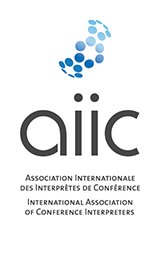Technical Standards
In order for simultaneous interpretation to work well, it is also vital to have the right equipment.
ISO Standards
The International Organization for Standardization (ISO) has worked closely with AIIC to draw up universal standards for interpretation booths and equipment.
-
- ISO Standard 2603:2016, Simultaneous interpreting – Permanent booths. Describes the requirements and recommendations for planning and building permanent booths for simultaneous interpreting in conference centres and rooms.
-
- ISO Standard 4043:2016, Simultaneous interpreting – Mobile booths. Describes the requirements and recommendations for manufacturing and using mobile interpretation booths..
-
- ISO Standard 20109:2016, Simultaneous interpreting – Equipment. Specifies the requirements for equipment used in interpreting booths. It also covers the components of conference and speech amplification systems that have a direct influence on the simultaneous interpreting system..
-
- ISO Standard 20108:2017, Simultaneous interpreting – Quality and transmission of sound and image input. Sets out the requirements for the quality and transmission of sound and image input to interpreters and specifies the characteristics of the audio and video signal.
-
- ISO Standard 22259:2019, Conference systems – Equipment requirements. This defines the requirements for conference systems, their related components, auxiliary related devices (microphones, headphones and amplifiers) and the environment in which they are used.
These standards are available from the ISO, or national standards committees. Details of the various standards, as well as further information, are available on the international AIIC website.
UNI – Italy’s National Standards Office – issued Standard UNI 11591:2015 concerning “Unregulated Professional Activities – Professionals working in the fields of translation and interpreting – Requirements in terms of knowledge, skills and competence". This governs unregulated professions and thus falls into the framework of Law 4, 2013.UNI Standard 11591:2015
Law no. 4/2013, approved by Parliament towards the end of its 16th term and published in Official Journal no. 22 on the 26th January 2013, has entrusted UNI with the task of defining – in specific technical Standards – the professional requirements and conditions for recognition of professions that are already firmly consolidated on the market and are becoming increasingly specialised. UNI’s decision to issue a Standard confirms its strong interest in professionals who had long been awaiting recognition by the Italian State.
The standard defines the requirements for the professional activity of translators and interpreters, i.e. the professionals who provide communication between different linguistic and cultural realities and establishes the relevant requirements in terms of qualifications, knowledge and skills. It explicitly refers to Level 7 of the European Qualifications Framework, which provides for: “highly specialised knowledge, some of which is at the forefront of knowledge in a field of work or study, as the basis for original thinking and/or research, as well as critical awareness of knowledge issues at the interface between different fields".
The Standard recognizes two distinct professional figures, the translator and the interpreter, two professions that, despite having much in common, require different types of preparation and training. In the area of interpreting there are four specialist profiles: conference interpreters (the profile represented by our Association), legal and court interpreters, social-medical interpreters and business interpreters.
